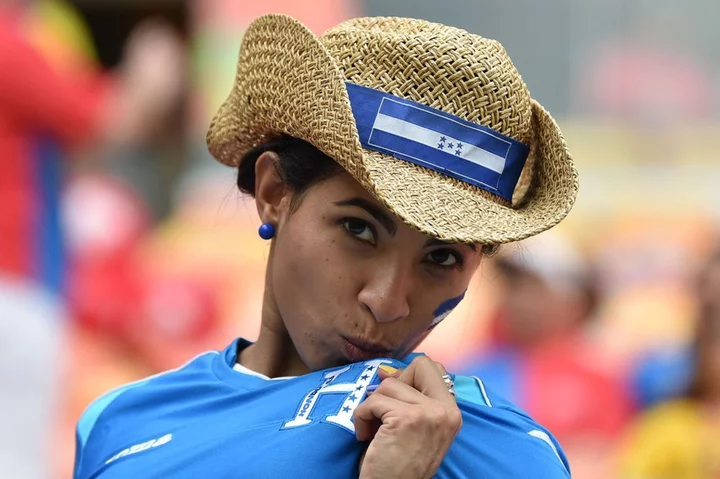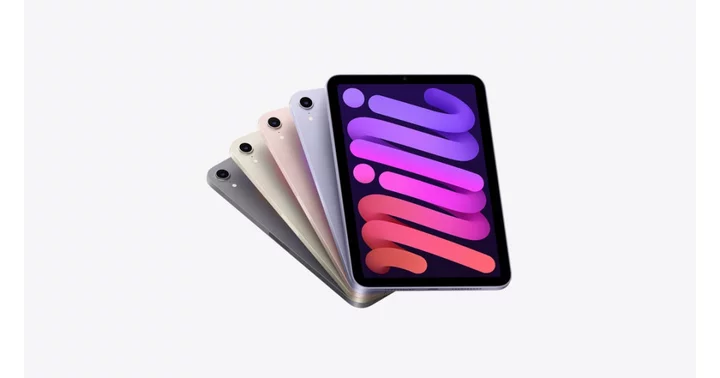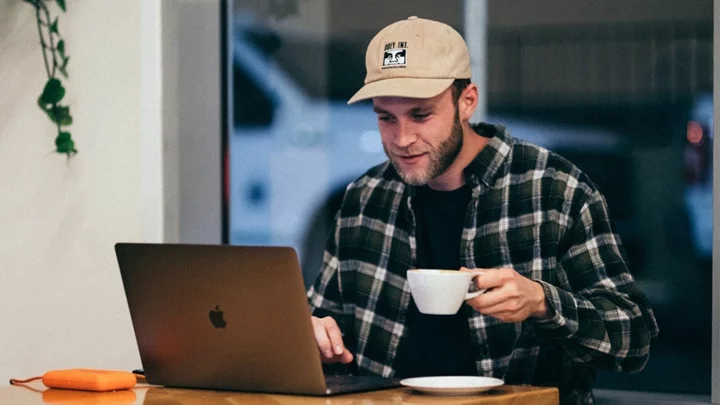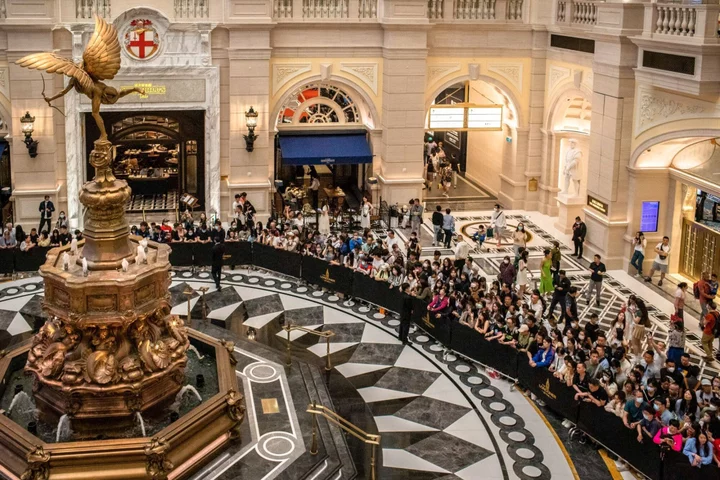As a first-generation Colombian American, I grew up around sports, and let’s be real fútbol, culture — even if I, personally, wasn’t kicking a ball. All around me, my relatives and neighborhood friends in New Jersey frequently wore their preferred fútbol team’s jersey. For the Colombians, it was Atlético Nacional, obviously. For those on the block who had longer roots in the Northeast, it was the New York Red Bulls. There were also many who sported jerseys of English league teams, with the names of their favorite South American or Central American players from those teams stitched on the backs.
This isn’t unique to my neighborhood. Throughout Latin America, the Caribbean, and Latine U.S.A, Latines are always representing where they’re from — in and outside of their respective homelands — through sports jerseys. For decades, Black and Latina women have stylized fútbol, baseball, basketball, and hockey jerseys, turning our ‘hoods into fashion and identity statements. So when I saw “blokecore” — a new TikTok fashion trend describing women who wear fútbol and sports attire — I felt like I was being hit by a ball that Brazilian Juninho Pernambucano kicked.
“For decades, Black and Latina women have stylized fútbol, baseball, basketball, and hockey jerseys, turning our ‘hoods into fashion and identity statements.”
Ashley Garcia Lezcano“Bloke” is an informal British term for a common man that’s similar to what “dude” or “guy next door” means in the U.S., and it has served as the basis for the currently trending TikTok aesthetic. Coined by Brandon Huntley, a North Carolina-raised content creator, “blokecore” has been popularized as a British football trend. With Bella Hadid’s streetwear looks, which often include jerseys and Adidas Sambas, cosigning and popularizing the trend, sports fashion is yet another TikTok trend that has been credited to non-Latine white folks that started long ago in Black and Latine communities, similar to the so-called “clean girl aesthetic” and “spa water.”
Somos spoke with four Latines from different regions of Latin America and the Caribbean about their relationship with the not-so-new fashion trend. Their stories prove that “blokecore” — or what should more aptly be called “block-core” — has a long history in Black and Latine fashion. Below, they discuss how they were introduced to sports and athleisure fashion and its evolution from our communities to popular culture.
Jennifer Motaval, Dominican American
Dominican music content creator Jennifer Motaval grew up in Uptown New York City and Philadelphia. Unlike me, her introduction to sports fashion didn’t stem from fútbol culture but rather through Black popular culture and its beloved musicians-turned-fashion icons. “I saw it the most on TV. When Mary J. Blige came out with the hockey jersey and combined it with the skirt and the combat boots,” she tells Refinery29 Somos. “I was born in ‘92, but my first memory of seeing these jerseys on women was through hip-hop and R&B artists like Aaliyah and TLC. I loved all of them. Growing up, they were like my Britney Spears,” she adds, noting that in the late 1990s it was the thing to dress “boyish sexy.”
Yet, because Motaval attended Catholic school, she wasn’t really able to express her individuality through fashion until her early 20s. “If you don’t know what it’s like to grow up in Catholic school, they’re very strict with everything. I would try to wear all-black Jordans and Nikes to play around with the dress code, and they were never having that,” she says.
By the time Motaval was attending college in Philadelphia, she was determined to build her personal style. “I got into thrifting super early, because obviously I’m not rich. Thrifting for inner-city, low-income kids is always an avenue for us to still look fly on a budget and have fun with it,” she shares. As someone who also formally played basketball and softball, she says she also enjoyed thrifting jerseys from each city she visited and their respective teams.
“Society enjoys embracing what’s cool as long as there’s a proximity to whiteness. If the poster child isn’t white or doesn’t have proximity to whiteness, it’s always going to be considered ratchet and lower class.”
Jennifer MotavalBy the time Motaval entered the music scene, she was wearing oversized jerseys to the studio. It was a way for her to feel fly but not bring unwanted attention to her body in male-dominated places. “I don’t think it’s okay for us to have to feel that way or move that way. But for me, it definitely became a security thing. Especially in the Dominican Republic, which is super hyper-masculine. In most cases I was the only girl in a lot of those spaces,” she shares.
While Motaval considers it cool that jerseys are at the center of “blokecore,” she recognizes that these trends already existed and many women have long embraced jerseys. “Society really has a way of looking down on trends that are born in the ‘hood, and everything that Is trendy is always birthed in the ‘hood,” she says. “Society enjoys embracing what’s cool as long as there’s a proximity to whiteness. If the poster child isn’t white or doesn’t have proximity to whiteness, it’s always going to be considered ratchet and lower class.”
Maya Salinas, Mexican American
Maya Salinas first remembers seeing the men in her Mexican-American family and the boys in her neighborhood sporting jerseys. Growing up in the Echo Park neighborhood of Los Angeles, most of the guys wore fútbol jerseys and, of course, LA Dodgers baseball jerseys. “I didn’t have any jerseys growing up because they were expensive,” Salinas tells Somos, noting that her first one, a Dodgers jersey, was gifted to her by a friend when she was 8 years old. “I didn’t thrift until I was 12 or 13. Then I started buying them because it’s a huge representation of where you’re from. Even if I am not a huge soccer fan, I’m gonna represent Mexico, to let people know.”
“They repackage our sauce, and then try to sell it to us.”
Maya SalinasWhile Salinas thinks it’s cool to represent where you come from through jerseys, she thinks “blokecore” is yet another instance of non-Latine white folks stealing styles and claiming it as their own. “I feel like it always roots from us. And then they claim it as their own; they repackage our sauce, and then try to sell it to us,” she says. “Brown and Black culture have become super trendy, and I think it’s annoying because I grew up on that shit and I would get made fun of for that. Yet, at the same time, it’s nice that people of our culture that used to be ashamed of it can embrace it themselves. It makes people that grew up on that, that were ashamed of it, more comfortable.”
Tony Vara, Salvadoran and Honduran American
Tony Vara grew up in Springfield, Virginia, just outside of Washington, DC. Raised by a Salvadoran mother and a Honduran father, Vara recalls his father wearing a fútbol jersey nearly every time he wasn’t working. Like many Latine fútbol enthusiasts, his Honduran dad’s jersey collection wasn’t reserved exclusively to his country’s teams. He recalls seeing his father wear jerseys from various countries, in and outside of Latin America. But his favorite team outside of his tierrita: Argentina, duh, ¿Porque que latino no ama a Messi?
As far as his own experience sporting jerseys, Vara recalls his mother dressing him in FC Barcelona jerseys. “My mother is a Barcelona fan, and my father is a Real Madrid fan. That was always the biggest soccer beef. When they would play, half my family would be in Real Madrid jerseys and the others would be wearing Barcelona jerseys.”
“They just look like they’re trying to dress Brazilian.”
Tony VaraVara, a content creator with more than 460,000 TikTok followers, hadn’t heard of “blokecore” until very recently, and he doesn’t think that’s a coincidence. Vara credits the 2022 World Cup to the popularity of the trend. “During the 2018 World Cup, no one was really on TikTok. In 2022, more people were online representing their teams.”
To him, the look is an emulation of everyday style in South and Central America. “They just look like they’re trying to dress Brazilian,” he tells Somos. As he explored the trend more deeply on TikTok, he found women referring to the style as “blokette.” But when Vara saw the images of the non-Latine white women in so-called blokette, his head, again, went to “Brazilian girls going to the beach,” adding that there’s many Brazilian and other Latina influencers who have long been sporting this aesthetic.
Raquel Reichard, Puerto Rican
Raquel Reichard grew up in a largely Puerto Rican neighborhood in East Orlando, Florida, in the 1990s and early 2000s. Around her, most people were migrants trying to create a new life for themselves in the city. “I would say 80 percent of my neighborhood was made up of transplants, either directly from one of the Caribbean islands or cities in the Northeast,” Reichard tells Somos. While her own parents were born in Puerto Rico, they were raised in New York and relocated to Orlando during one of the most iconic times in the city’s basketball team’s history: the mid-’90s.
With Penny Hardaway and the soon-to-be legendary Shaquille O’Neal on the Orlando Magic, Orlando had a powerhouse team. “Everyone in Orlando was repping the Orlando Magic, hard. Honestly, everyone in the country. We were just that team,” she says. Although Reichard’s family couldn’t necessarily afford tickets to the historic games, they were definitely all representing their team through jerseys, t-shirts, hats, and headbands.
“I’ve intentionally been calling it ‘block-core,’ because it’s a way that I feel many of us in Black and Latine neighborhoods rep our block and take pride in the neighborhoods that made us who we are.”
raquel reichardBy the time the early 2000s came around, Reichard, still heavily influenced by Nuyorican culture and New York’s hip-hop culture, also participated in the rise of feminine jersey aesthetics. Whether rocking her New York Knicks jersey dress with her all-white Air Force 1s or her New York Mets jersey with a fresh pair of Air Jordans, she remembers a time when all the Black and Latine tween and teen girls represented their neighborhoods, birthplaces, and homelands with their jerseys.
Actively part of this fashion trend, Reichard resists the name “bokecore.” “I’ve intentionally been calling it ‘block-core,’ because it’s a way that I feel many of us in Black and Latine neighborhoods rep our block and take pride in the neighborhoods that made us who we are.”









